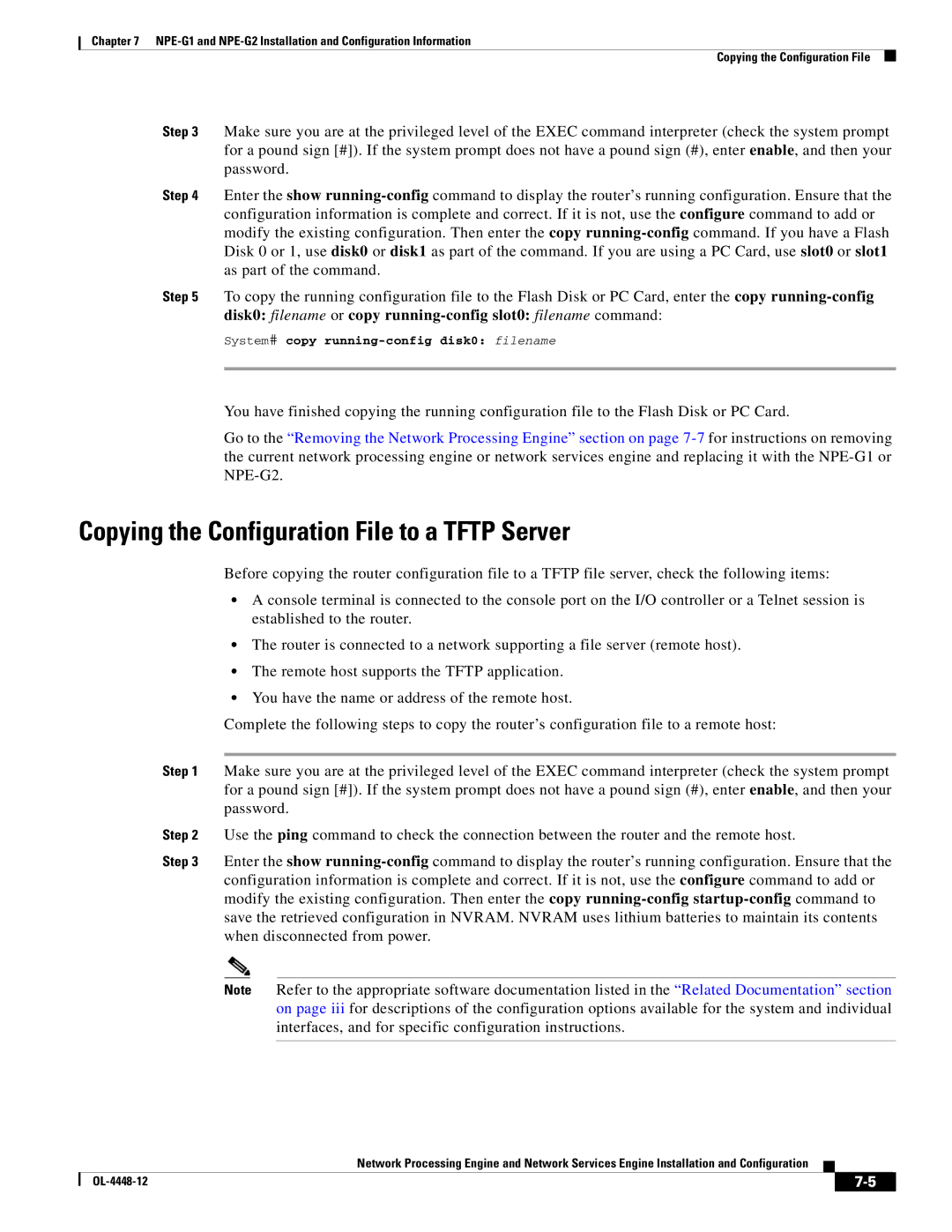
Chapter 7
Copying the Configuration File
Step 3 Make sure you are at the privileged level of the EXEC command interpreter (check the system prompt for a pound sign [#]). If the system prompt does not have a pound sign (#), enter enable, and then your password.
Step 4 Enter the show
Step 5 To copy the running configuration file to the Flash Disk or PC Card, enter the copy
System# copy running-config disk0: filename
You have finished copying the running configuration file to the Flash Disk or PC Card.
Go to the “Removing the Network Processing Engine” section on page
Copying the Configuration File to a TFTP Server
Before copying the router configuration file to a TFTP file server, check the following items:
•A console terminal is connected to the console port on the I/O controller or a Telnet session is established to the router.
•The router is connected to a network supporting a file server (remote host).
•The remote host supports the TFTP application.
•You have the name or address of the remote host.
Complete the following steps to copy the router’s configuration file to a remote host:
Step 1 Make sure you are at the privileged level of the EXEC command interpreter (check the system prompt for a pound sign [#]). If the system prompt does not have a pound sign (#), enter enable, and then your password.
Step 2 Use the ping command to check the connection between the router and the remote host.
Step 3 Enter the show
Note Refer to the appropriate software documentation listed in the “Related Documentation” section on page iii for descriptions of the configuration options available for the system and individual interfaces, and for specific configuration instructions.
Network Processing Engine and Network Services Engine Installation and Configuration
|
| ||
|
|
